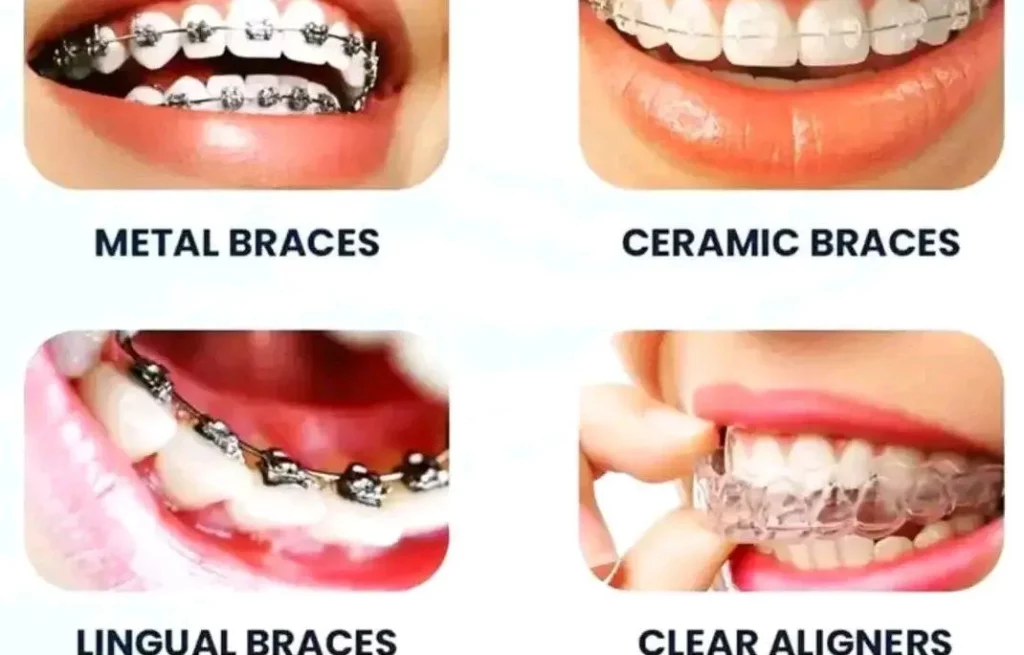Different Options for Orthodontic Braces
Braces for Adults: Exploring Your Modern Orthodontic Options
In this modern age of selfies, social media influencers, and an ever-increasing spotlight on physical appearance, it’s no surprise that more and more adults are choosing to revisit their orthodontic health. Platforms like Facebook and Instagram have made image-sharing a part of daily life, and as a result, many individuals are paying closer attention to their smiles than ever before. A beautifully aligned smile not only boosts self-confidence but can also enhance one’s overall appearance in photos, videos, and real-life interactions.
But let’s be clear—orthodontic treatment isn’t just about aesthetics. While it’s true that a straighter smile is often perceived as more attractive, properly aligned teeth also play a critical role in oral health. Straight teeth make it easier to chew, speak clearly, and maintain effective hygiene. Misaligned teeth, on the other hand, can contribute to jaw pain, uneven wear, speech issues, and increased risk of tooth decay and gum disease.
Whether your motivation is cosmetic or functional—or both—braces remain a time-tested, reliable solution. And thanks to advancements in dental technology, there are more choices than ever before when it comes to achieving a straighter smile. Here’s a closer look at four common types of braces available to adults today:
1. Metal Braces: The Classic and Cost-Effective Option
Traditional metal braces have been around for decades, and for good reason—they’re effective, durable, and suitable for correcting even the most complex orthodontic issues. This option is also the most affordable, making it an accessible solution for many patients.
These braces consist of stainless steel brackets that are bonded to the teeth, connected by a thin archwire, and held in place by small elastic bands. Over time, your orthodontist will make adjustments to gradually shift your teeth into better alignment.
While metal braces are highly effective, they’re also the most noticeable. Some patients may feel self-conscious about the appearance, and the hardware can cause initial discomfort or irritation to the cheeks and lips, especially during the first few weeks. Adopting a braces-friendly diet—one that avoids hard, sticky, or crunchy foods—can help reduce the risk of damage and discomfort.
2. Ceramic Braces: A More Discreet Alternative
Ceramic braces function similarly to metal braces, but with one key difference: the brackets are made of a clear or tooth-colored ceramic material, making them far less noticeable. For adults who want the benefits of traditional braces without the bold metal look, this can be a great middle-ground solution.
However, ceramic braces do come with a few trade-offs. They tend to be slightly more expensive than their metal counterparts, and the materials—while strong—are somewhat more fragile. This means they may be prone to breakage or require extra care. In addition, the clear or white brackets can stain over time, especially if you’re a fan of red wine, coffee, or tobacco products.
Despite these considerations, ceramic braces remain a popular option for adults who want effective orthodontic treatment with a more subtle appearance.
3. Lingual Braces: Hidden From Sight
Lingual braces are a unique option in that they are placed on the backside of the teeth—completely hidden from view. From the front, no one can tell you’re wearing braces, making this a top choice for professionals or anyone wanting a truly invisible treatment.
While lingual braces offer excellent discretion, they can be more challenging to install and maintain. Not every orthodontist provides this service, as it requires specialized training and precise customization. Additionally, they may be more difficult to clean, and patients often experience more tongue irritation than with traditional braces.
Lingual braces can be an excellent option for adults with the right tooth structure and a willingness to follow detailed care instructions.
4. Clear Aligners: Nearly Invisible and Highly Convenient
Clear aligners like Invisalign® have revolutionized orthodontic treatment for adults. These custom-made, removable trays are made of smooth, transparent plastic and gradually move your teeth into the desired position—without the need for brackets or wires.
One of the biggest advantages of clear aligners is their near invisibility. Most people won’t even know you’re wearing them. They are also removable, which means you can eat, brush, and floss with ease—no dietary restrictions required.
Clear aligners are typically changed out every 1–2 weeks as your teeth gradually shift, and while you’ll still need check-ins with your orthodontist, they are often less frequent than with traditional braces.
However, this option does require discipline—aligners must be worn 20–22 hours a day for optimal results. If you’re prone to forgetting or removing them often, they may not be the best choice for you.
Find the Right Fit for Your Smile
Every smile is unique, and the best way to determine which type of braces is right for you is to schedule a consultation with your dentist or orthodontist. At Sweet Water Dentistry, we’re here to guide you through the process and help you find a treatment plan that suits your needs, lifestyle, and budget.
Whether you’re looking for a subtle enhancement or a full orthodontic transformation, today’s options make it easier than ever to achieve a smile you’ll be proud to share—on and off camera.
Visit us for expert care:
Sweet Water Dentistry
📍 5915 Sweetwater Cir, Fairhope, AL 36532
🌐 sweetwatersmile.com
📞 Call or Text: (251) 210-2773
Follow us on Facebook and Instagram for the latest updates and special offers!



